- Growing onions from seeds: a step-by-step guide
- Sowing the seeds
- Caring for the seedlings
- Harvesting the onions
- Tips for success
- Conclusion
- Choosing the right seeds for your onion garden
- 1. Variety
- 2. Disease resistance
- 3. Day length
- 4. Seed quality
- 5. Planting method
- Preparing the soil for sowing onion seeds
- 1. Choose a suitable location
- 2. Clear the area
- 3. Prepare the soil
- 4. Test the soil
- 5. Add organic matter
- 6. Provide proper drainage
- 7. Create raised beds or rows
- 8. Level the soil
- 9. Pre-fertilize the soil
- Sowing onion seeds: techniques and timing
- Timing
- Preparing the soil
- Sowing techniques
- Germination and care
- Conclusion
- Caring for onion seedlings: watering, fertilization, and protection
- Watering
- Fertilization
- Protection
- Transplanting onion seedlings into the garden
- Step 1: Preparation
- Step 2: Watering
- Step 3: Transplanting
- Step 4: Watering and Mulching
- Step 5: Care and Maintenance
- Maintaining healthy onion plants: pests and diseases control
- 1. Onion thrips (Thrips tabaci)
- 2. Onion maggots (Delia antiqua)
- 3. Pink root (Pyrenochaeta terrestris)
- 4. Downy mildew (Peronospora destructor)
- Harvesting and Storing Home-Grown Onions
- 1. Determine the right time to harvest
- 2. Lift the onions carefully
- 3. Cure the onions
- 4. Trim and clean the onions
- 5. Store the onions properly
- 6. Check for spoilage regularly
- “Question-Answer”
- How do I grow onions from seeds?
- What is the best time to sow onion seeds?
- Can I sow onion seeds directly in the garden?
- How long does it take for onion seeds to germinate?
- What are some common problems when growing onions from seeds?
- When is the best time to harvest onions grown from seeds?
- “Video” How to Grow Onions from Seed
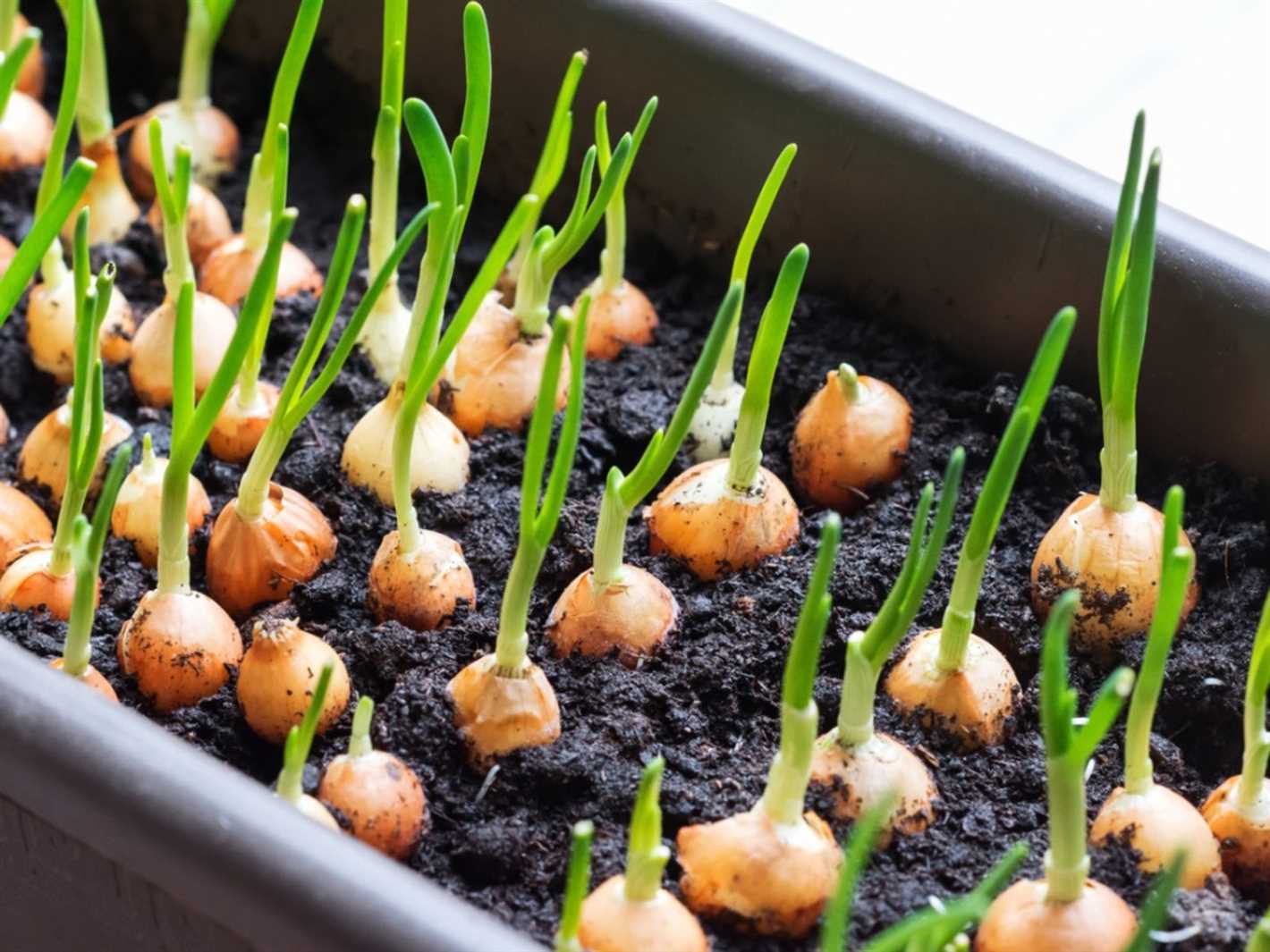
Growing onions from seeds can be a rewarding experience for both experienced gardeners and those just starting out. While many people prefer to grow onions from sets or transplants, sowing onions from seeds allows for a wider selection of varieties and can be more economical.
When it comes to sowing onion seeds, timing is key. Onions are cool-season vegetables, so it’s best to sow the seeds in early spring, as soon as the soil can be worked. The seeds should be sown about half an inch deep and spaced approximately one inch apart. It’s important to keep the soil moist during germination, which typically takes around 7-10 days.
Once the onion seedlings have emerged, thinning is necessary to ensure proper growth. The seedlings should be thinned to about three inches apart to allow for adequate space for the onions to develop. Thinning can be a difficult process, but it’s important to give the remaining seedlings the best chance at success.
“When thinning the onion seedlings, I like to use the thinnings as green onions in salads or other dishes. This way, nothing goes to waste and I get to enjoy the fresh taste of onions early on in the growing season,” shares Mark Johnson, an experienced gardener.
As the onion plants continue to grow, it’s important to keep them well-watered, especially during dry spells. Onions have shallow roots, so regular, deep watering is crucial for their development. Additionally, fertilizing the onion plants every few weeks with a balanced organic fertilizer will help promote growth and ensure healthy bulbs at harvest time.
Harvesting onions can be done when the foliage starts to turn yellow and topple over. At this point, the plants can be gently lifted from the ground and allowed to dry in a warm, well-ventilated area. Once the onions have dried, they can be stored in a cool, dry place and enjoyed for months to come.
Growing onions from seeds: a step-by-step guide
Sowing the seeds
1. Start by selecting a suitable location for sowing the onion seeds. Choose a sunny spot in your garden with well-drained soil.
2. Prepare the soil by removing any weeds and loosening it with a garden fork or spade.
3. Sow the onion seeds directly into the soil, spacing them about 1 inch apart. Make shallow furrows or small holes to place the seeds in.
4. Cover the seeds with a thin layer of soil and gently pat it down to ensure good seed-to-soil contact.
Caring for the seedlings
1. Keep the soil consistently moist but not overly wet. Water the seedlings regularly, especially during dry periods.
2. Use a balanced fertilizer to provide nutrients to the growing onion plants. Follow the manufacturer’s instructions for application rates.
3. Keep the area around the onion seedlings free from weeds, as they can compete for nutrients and water.
4. Thin out the seedlings once they have grown to a height of about 3 inches. Leave only the strongest seedlings, spacing them about 4-6 inches apart.
Harvesting the onions
1. Onions can be harvested when the tops start to turn yellow and flop over. This usually happens after about 100-120 days from sowing the seeds.
2. Gently loosen the soil around the onion bulbs using a garden fork or spade.
3. Carefully lift the onions from the soil, taking care not to damage the bulbs.
4. Allow the harvested onions to dry in a cool, dry place for a few weeks before storing them.
Tips for success
- Choose onion varieties that are suitable for growing in your climate and soil conditions.
- Monitor the moisture levels in the soil to prevent the onions from drying out or becoming waterlogged.
- Provide adequate spacing between the onion plants to allow for proper bulb development.
- Remove any flower stalks that appear, as they can divert energy away from bulb growth.
Conclusion
Growing onions from seeds can be a rewarding experience for any gardener. By following these step-by-step instructions, you can enjoy a bountiful harvest of fresh, homegrown onions.
Choosing the right seeds for your onion garden
When it comes to growing onions from seeds, choosing the right seeds is crucial for a successful harvest. Here are some key factors to consider when selecting onion seeds for your garden:
1. Variety
There are many different varieties of onions available, each with its own unique characteristics. Some varieties are best suited for growing in specific climates or soil conditions, while others may have superior flavor or storage capabilities. Consider what you want in an onion, whether it’s a sweet or pungent flavor, a long or short storage life, or a particular color or shape.
2. Disease resistance
Onions are susceptible to various diseases, including downy mildew, white rot, and botrytis. To prevent these diseases from ruining your crop, look for onion seeds that are resistant to common diseases in your area. Disease-resistant varieties can help ensure a healthier and more productive garden.
3. Day length
Onions can be classified into three different day-length categories: short-day, intermediate-day, and long-day. The day-length requirement of an onion variety determines when it will bulb and ultimately when it will be ready for harvest. Be sure to choose a variety that is well-suited to the specific day length of your region.
4. Seed quality
High-quality seeds are essential for successful onion cultivation. Look for seeds that are fresh, clean, and have a high germination rate. Avoid seeds that are discolored, damaged, or past their expiration date. It’s also a good idea to purchase seeds from reputable suppliers to ensure you’re getting the best quality possible.
5. Planting method
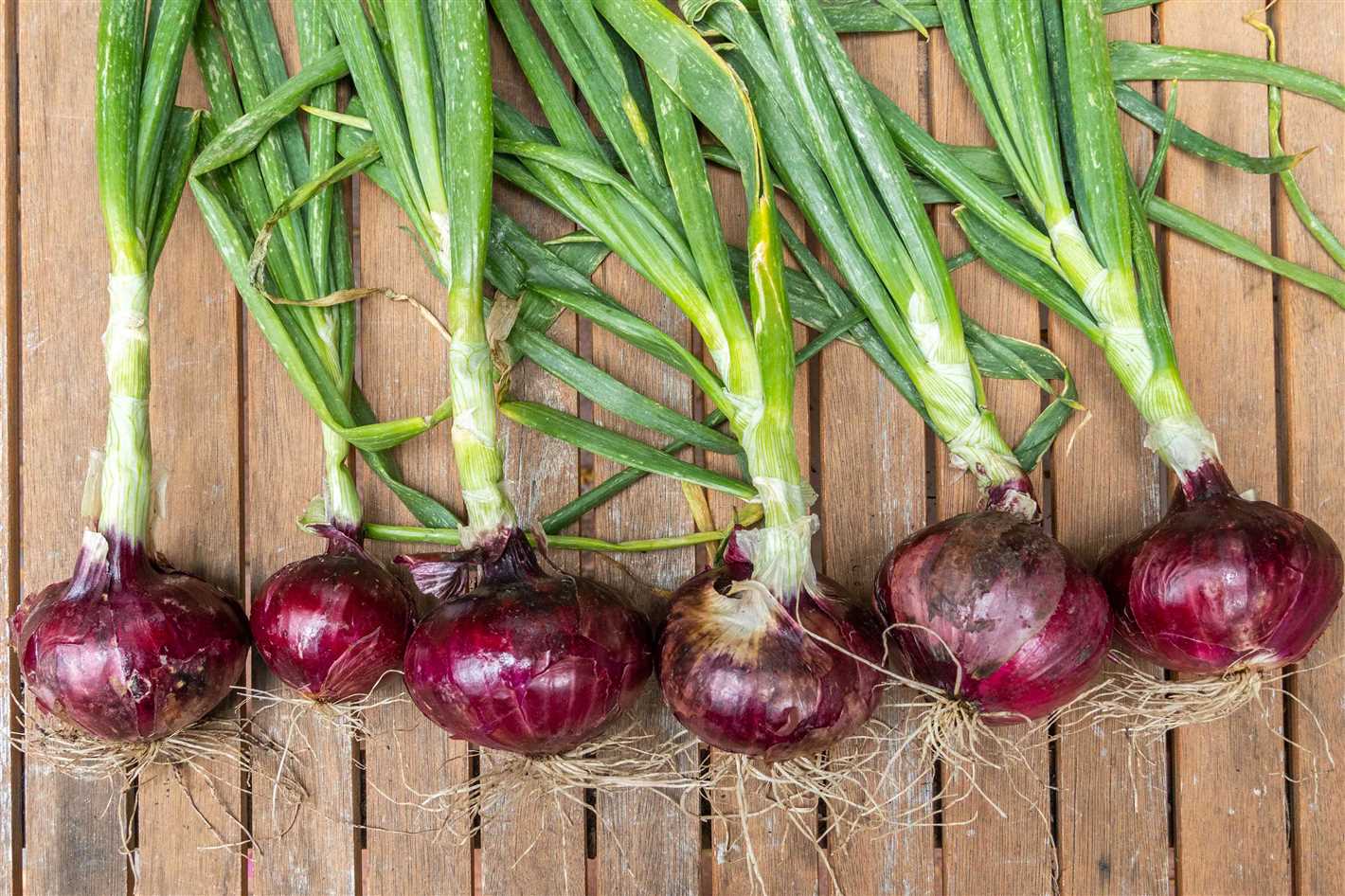

Consider the type of planting method you plan to use. If you prefer to start your onion seeds indoors and then transplant them into your garden, choose seeds that are well-suited for transplanting. Alternatively, if you plan to sow seeds directly in the garden, opt for varieties that are better suited for direct seeding.
By considering these factors and choosing the right seeds for your onion garden, you’ll be on your way to a successful onion harvest. Happy gardening!
Preparing the soil for sowing onion seeds
Proper soil preparation is essential for growing healthy and productive onions from seeds. Here are some important steps to follow:
1. Choose a suitable location
Select a sunny area in your garden that receives at least 6-8 hours of direct sunlight per day. Onions prefer well-drained soil, so avoid areas prone to waterlogging.
2. Clear the area
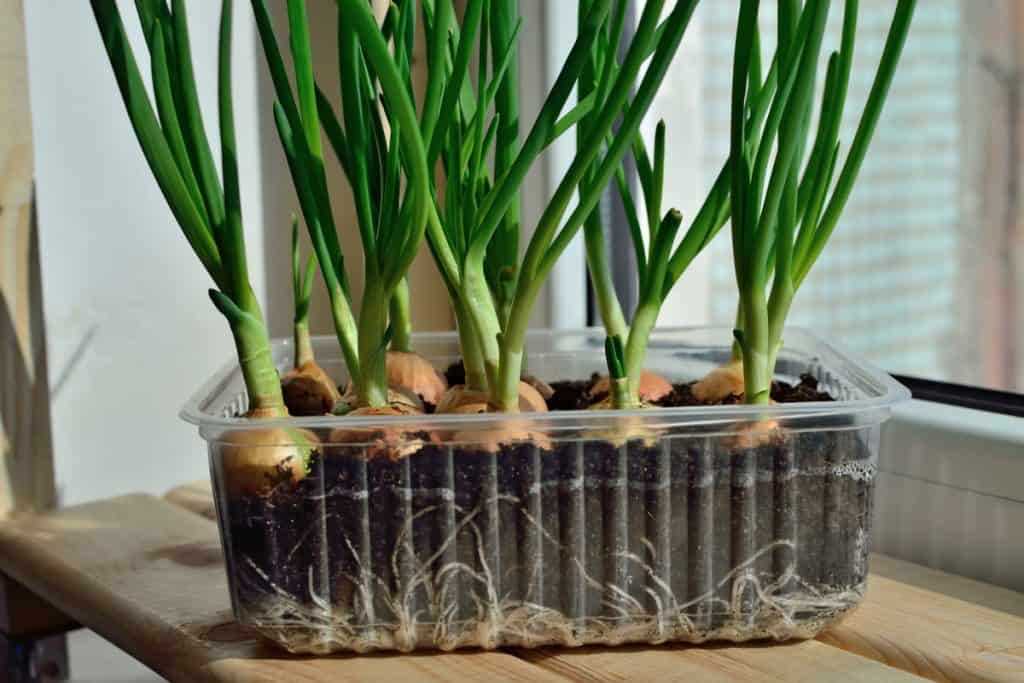

Remove any weeds, rocks, or debris from the planting area. Onions perform best in weed-free soil, so it’s important to remove any potential competition.
3. Prepare the soil
Loosen the soil to a depth of 8-10 inches using a garden fork or tiller. Break up any clumps and remove any large stones. This will provide a loose, well-aerated soil for the onion roots to grow in.
4. Test the soil
Perform a soil test to assess the pH and nutrient levels of your soil. Onions prefer a slightly acidic soil with a pH between 5.5 and 6.5. Based on the test results, you may need to amend the soil with organic matter or fertilizers to create an optimal growing environment.
5. Add organic matter
Incorporate well-rotted compost or aged manure into the soil to improve its structure and fertility. This will provide essential nutrients and promote healthy root development.
6. Provide proper drainage
If your soil has poor drainage, consider adding sand or peat moss to improve its ability to drain excess water. Onions dislike waterlogged conditions and may rot if the soil remains consistently moist.
7. Create raised beds or rows
Create raised beds or raised rows to improve drainage and prevent waterlogging. This can be done by mounding up soil or creating furrows with higher edges.
8. Level the soil
Rake the soil to create a smooth surface for sowing onion seeds. This will facilitate even germination and make it easier to tend to the plants as they grow.
9. Pre-fertilize the soil
Before sowing the onion seeds, apply a balanced fertilizer according to the instructions on the package. This will provide a strong start for the seedlings.
By following these steps, you will create an optimal soil environment for sowing onion seeds and ensure the best possible start for your onion plants.
Sowing onion seeds: techniques and timing
Growing onions from seeds can be a rewarding and satisfying experience for any gardener. However, sowing onion seeds requires careful attention to timing and proper techniques. Here are some tips to help you successfully sow onion seeds:
Timing
Onion seeds can be sown indoors or directly in the garden. The timing of sowing depends on the type of onion you are growing.
- For spring onions or green onions, seeds can be sown as early as late winter or early spring, around 8 to 10 weeks before the last frost date.
- For regular bulb onions, seeds should be sown in early spring, around 10 to 12 weeks before the last frost date.
Preparing the soil
Onions thrive in well-draining soil with a pH level between 6.0 and 7.5. Before sowing the seeds, prepare the soil by removing any weeds and adding organic matter such as compost or well-rotted manure. This will provide the onions with the necessary nutrients for healthy growth.
Sowing techniques
When sowing onion seeds indoors, fill small containers or trays with seed starting mix. Moisten the soil with water and sow the seeds evenly, about ¼ inch deep. Cover the containers with plastic wrap or a propagator lid to create a moist and warm environment for germination.
If sowing directly in the garden, create furrows in the soil about ½ inch deep and sow the seeds thinly along the furrows. Gently cover the seeds with soil and water thoroughly.
Germination and care
Onion seeds usually take around 7 to 10 days to germinate. During this period, make sure to keep the soil evenly moist but not waterlogged. Once the seedlings emerge, remove the plastic wrap or propagator lid if sown indoors.
Thin the seedlings to ensure proper spacing, as overcrowding can result in smaller bulbs. Onion seedlings should be spaced at least 4 to 6 inches apart in rows, with 12 to 18 inches between each row.
Conclusion
By following these techniques and timing guidelines, you can have a successful onion seed sowing experience. Remember to pay attention to the specific requirements of the onion variety you are growing and adjust your sowing schedule accordingly. With proper care and attention, you will soon be harvesting fresh and flavorful onions from your own garden.
Caring for onion seedlings: watering, fertilization, and protection
Once your onion seeds have germinated and the seedlings have emerged, it’s important to provide proper care to ensure healthy growth and development. Here are some tips for caring for onion seedlings:
Watering
Onion seedlings require consistent moisture to thrive, but it’s important not to overwater them, as this can lead to rotting. Water the seedlings when the top inch of soil feels dry to the touch. Use a watering can or a gentle spray nozzle to avoid disturbing the delicate seedlings. Water the seedlings at the base, aiming to keep the foliage dry to prevent the onset of diseases.
Fertilization
Onion seedlings benefit from regular fertilization to ensure healthy growth. A balanced fertilizer with equal amounts of nitrogen, phosphorus, and potassium is recommended. Start fertilizing the seedlings two weeks after emergence and continue every two weeks until transplanting them into the garden. Be careful not to over-fertilize, as this can lead to excessive leaf growth at the expense of bulb development.
Protection
Protecting onion seedlings from pests and diseases is crucial to their survival. Use organic pest control methods, such as applying neem oil or insecticidal soap, to deter common onion pests like aphids and onion maggots. Additionally, keep a close eye on the seedlings for any signs of disease, such as yellowing or wilting. If disease is detected, remove and destroy affected seedlings to prevent the spread.
Remember, caring for onion seedlings requires attention to their water needs, nutrient supply, and protection from pests and diseases. By providing these essentials, you can help ensure strong and healthy onion plants for a successful harvest.
Transplanting onion seedlings into the garden
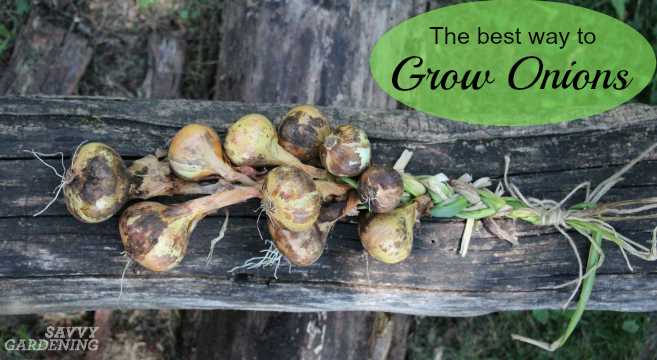

Transplanting onion seedlings is an important step in the process of growing onions from seeds. It is crucial to do this at the right time and with careful attention to detail in order to ensure the success of your onion crop.
Step 1: Preparation
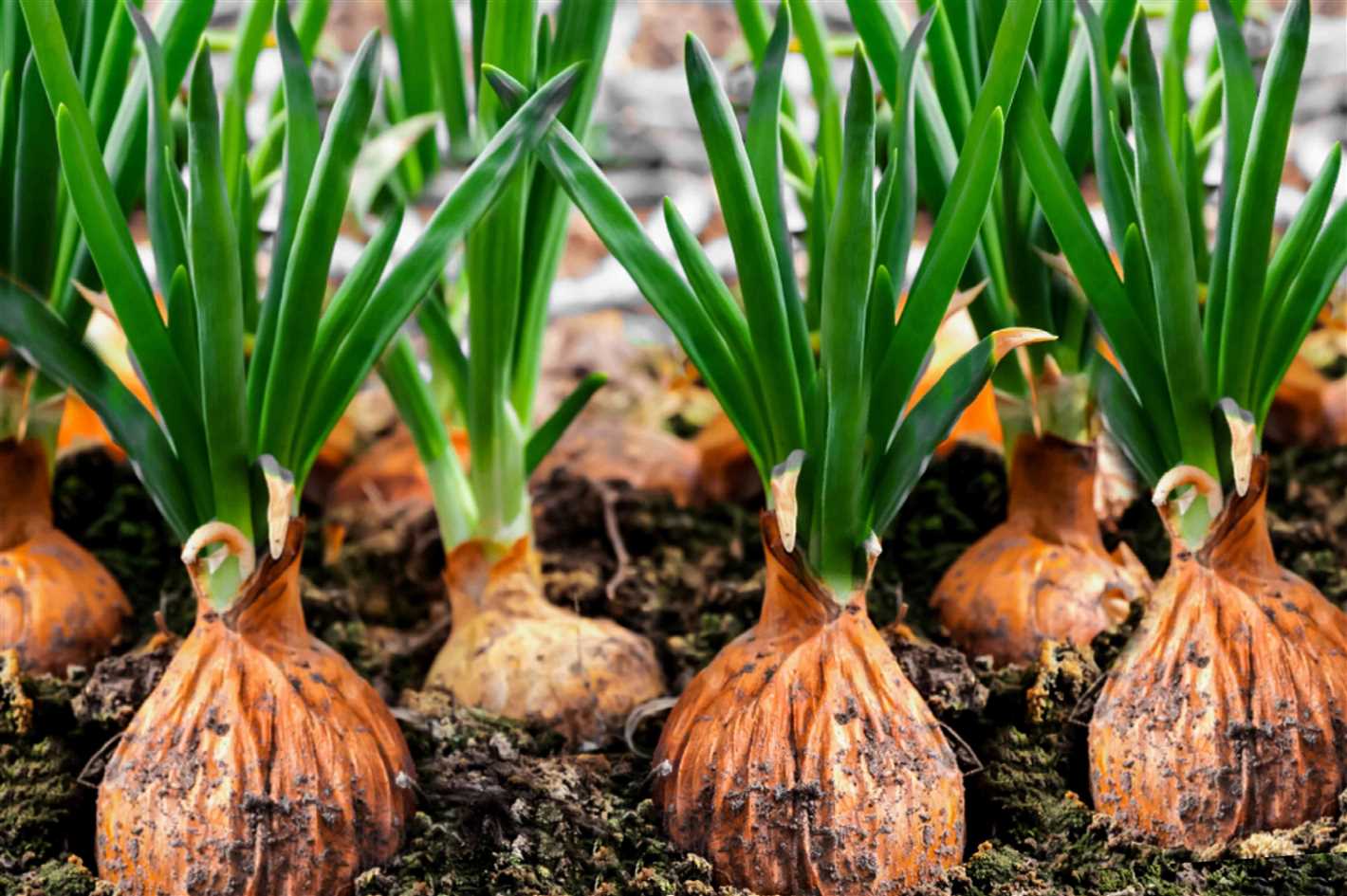

Before transplanting your onion seedlings, make sure to prepare the garden bed. Clear away any weeds or debris and loosen the soil with a garden fork or tiller. It’s also a good idea to add compost or well-rotted manure to enrich the soil.
Step 2: Watering
Water the onion seedlings thoroughly a few hours before transplanting. This will help to loosen the soil around the seedlings and make it easier to remove them from their containers.
Step 3: Transplanting
When the seedlings are around 4-6 weeks old and have grown to a height of about 6 inches, they are ready to be transplanted. Carefully remove the seedlings from their containers, being mindful not to damage the fragile roots.
Using a dibber or your fingers, create small holes in the garden bed, spacing them 4-6 inches apart. Gently place the seedlings in the holes, making sure that the roots are well-covered with soil. Pat the soil lightly around the base of each seedling to secure them in place.
Step 4: Watering and Mulching
After transplanting the onion seedlings, water them thoroughly to help them establish in their new location. Adding a layer of mulch around the seedlings can help to retain moisture and suppress weed growth.
Step 5: Care and Maintenance
As the onion seedlings continue to grow, ensure they receive adequate watering, especially during dry periods. Regularly check for any signs of pests or diseases and take appropriate action to prevent damage.
It’s also important to monitor the spacing between the onion plants. As they grow, thin them to allow enough space for the bulbs to develop properly.
By following these steps and giving your onion seedlings the proper care, you can look forward to a successful harvest of healthy and delicious onions from your garden.
Maintaining healthy onion plants: pests and diseases control
Onion plants can be affected by various pests and diseases that can significantly reduce their yield and overall health. Taking proper measures to control these pests and diseases is essential for maintaining healthy onion plants. Here are some common pests and diseases that affect onion plants and ways to control them:
1. Onion thrips (Thrips tabaci)
Onion thrips are tiny insects that feed on the leaves of onion plants, causing silver streaks, discoloration, and wilting. To control onion thrips:
- Monitor your plants regularly for signs of thrips infestation.
- Remove and destroy heavily infested plants to prevent the spreading of thrips.
- Introduce natural predators, such as ladybugs and lacewings, to control thrips population.
- Apply insecticidal soap or neem oil to the affected plants to kill thrips.
2. Onion maggots (Delia antiqua)
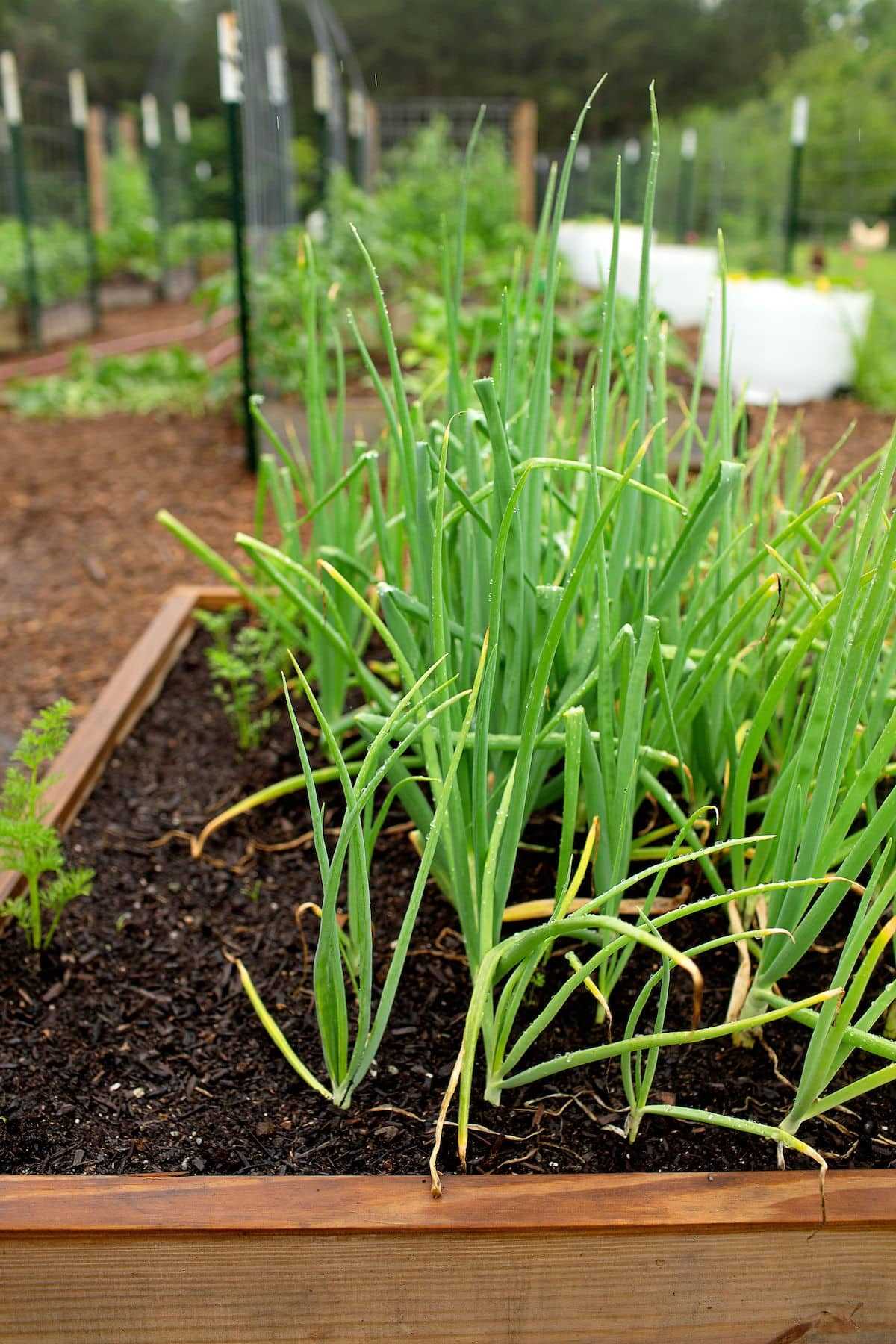

Onion maggots are the larvae of a small fly that burrows into the onion bulbs, causing rot and damage. To control onion maggots:
- Rototill the soil in the fall to expose overwintering onion maggots to frost and predation.
- Practice crop rotation, avoid planting onions in the same area for consecutive years.
- Use row covers to prevent the flies from laying eggs on the onions.
- Apply beneficial nematodes to the soil to control onion maggot larvae.
3. Pink root (Pyrenochaeta terrestris)
Pink root is a fungal disease that affects onion roots, causing them to turn pink or reddish-brown and rot. To control pink root:
- Plant disease-resistant onion varieties.
- Avoid excessive irrigation and ensure proper drainage to reduce moisture levels.
- Practice crop rotation, avoid planting onions in the same area for several years.
- Apply fungicides that are specifically designed to control pink root.
4. Downy mildew (Peronospora destructor)
Downy mildew is a fungal disease that affects the leaves of onion plants, causing yellow spots, curling, and stunted growth. To control downy mildew:
- Plant disease-resistant onion varieties.
- Remove and destroy infected plants to prevent the spread of the disease.
- Avoid overhead watering and ensure proper airflow to reduce humidity.
- Apply fungicides that are specifically designed to control downy mildew.
| Pest/Disease | Control Methods |
|---|---|
| Onion thrips | Monitoring, removing infested plants, introducing natural predators, applying insecticidal soap or neem oil |
| Onion maggots | Fall rototilling, crop rotation, row covers, application of beneficial nematodes |
| Pink root | Planting disease-resistant varieties, proper irrigation and drainage, crop rotation, fungicide application |
| Downy mildew | Planting disease-resistant varieties, removing infected plants, proper watering and airflow, fungicide application |
Harvesting and Storing Home-Grown Onions
Growing your own onions can be a rewarding experience, and once they have reached maturity, it’s time to harvest them. Here are some tips for harvesting and storing your home-grown onions:
1. Determine the right time to harvest
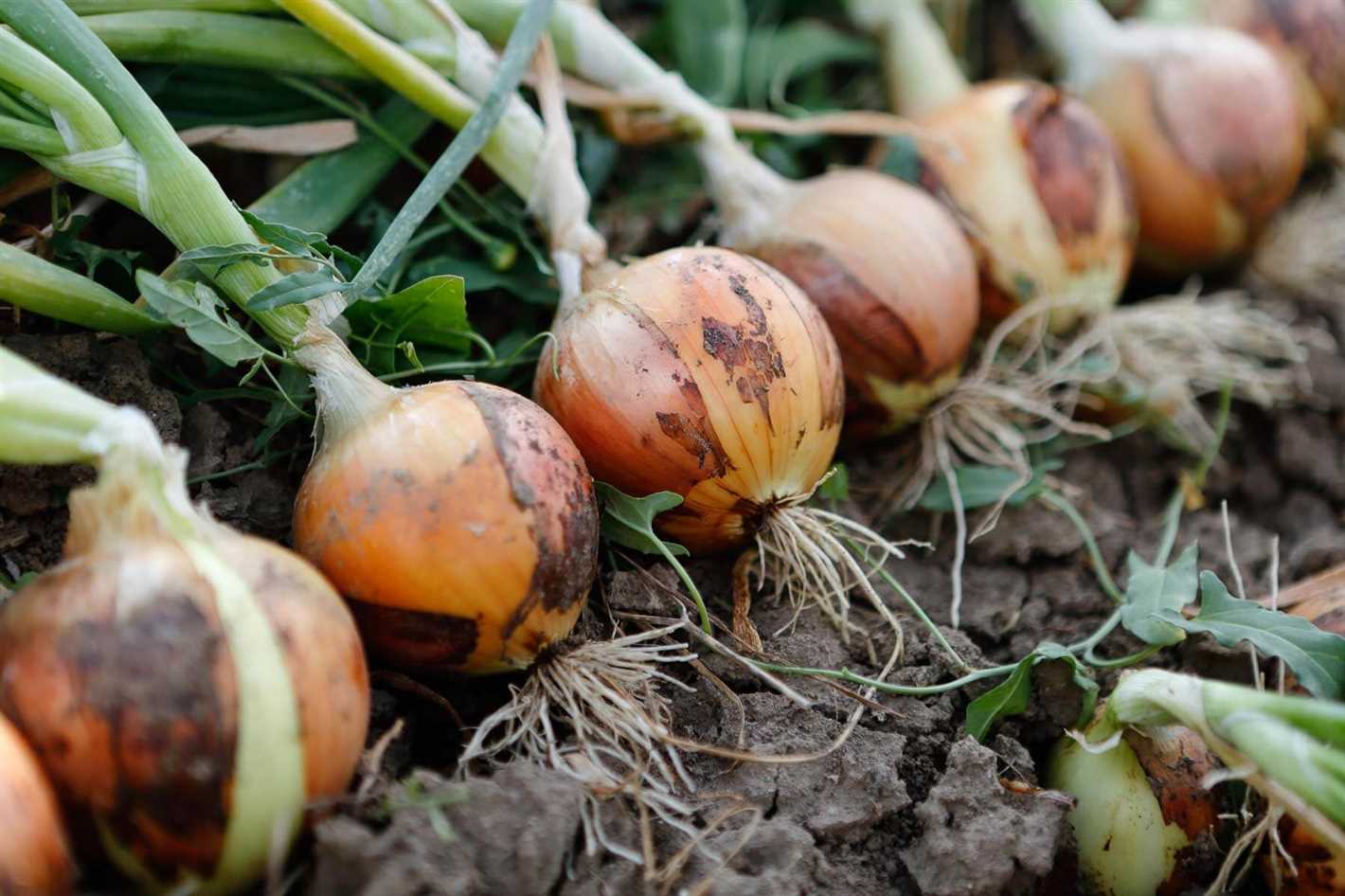

Onions are ready to be harvested when the tops start to turn yellow and flop over. This usually occurs around late summer or early fall, depending on the variety you are growing. You can gently push the tops over to speed up the drying process.
2. Lift the onions carefully
Using a garden fork or trowel, carefully lift the onions from the soil. Be gentle to avoid damaging the bulbs. If the soil is moist, let the onions dry in a well-ventilated area before storing them.
3. Cure the onions
After harvesting, onions need to be cured to allow them to develop a papery skin and to improve their storage life. Lay the onions in a single layer in a warm, dry, and well-ventilated area. This can be a shed, garage, or a sunny spot in the garden. Avoid direct sunlight, as it can cause the onions to sunburn.
4. Trim and clean the onions
Once the onions have cured for about two weeks and the necks have dried, trim the tops and roots. Remove any loose or flaky skin, but be careful not to remove too much. Gently brush off any dirt or debris from the onions.
5. Store the onions properly
Store the onions in a cool and dry place with good air circulation. Some options for storage include mesh bags, hanging them in pantyhose, or keeping them in wire baskets. Avoid storing onions near potatoes or other fruits and vegetables that release moisture as they can cause the onions to spoil faster.
6. Check for spoilage regularly
Inspect your stored onions regularly for any signs of spoilage. Remove any onions that are soft, bruised, or showing signs of disease to prevent them from affecting the rest of the batch.
By following these tips for harvesting and storing home-grown onions, you can enjoy your bounty for months to come. Whether you plan to use them in cooking, pickling, or storing them for later use, home-grown onions can add freshness and flavor to your dishes.
“Question-Answer”
How do I grow onions from seeds?
To grow onions from seeds, start by sowing the seeds indoors in trays or containers in early spring. Make sure to use well-drained soil and water the seeds regularly. Once the seedlings have grown to a certain size, transplant them into your garden or a larger container. When the onions have reached maturity, you can harvest them by gently pulling them out of the ground.
What is the best time to sow onion seeds?
The best time to sow onion seeds is in early spring, around 10-12 weeks before the last frost date. This will allow the onions to grow and mature before the hot summer months. Sowing the seeds too late in the season may result in smaller onions or even the onions going to seed before reaching maturity.
Can I sow onion seeds directly in the garden?
Yes, you can sow onion seeds directly in the garden. However, it is important to prepare the soil beforehand by removing any weeds and loosening it with a fork or tiller. Sow the seeds thinly and cover them lightly with soil. Keep the soil moist and weed-free until the seedlings emerge. Thinning may be necessary once the seedlings are large enough to handle.
How long does it take for onion seeds to germinate?
Onion seeds usually take around 7-10 days to germinate, but it can vary depending on the temperature and conditions. It is important to keep the soil moist during this period to ensure successful germination. Once the seedlings have emerged, they can be transferred to a larger container or transplanted into the garden.
What are some common problems when growing onions from seeds?
Some common problems when growing onions from seeds include damping off, which is a fungal disease that can cause seedlings to wilt and die; onion maggot, which is a fly larvae that feeds on the roots of young onion plants; and onion thrips, which are tiny insects that can cause stunted growth and discoloration of the leaves. These problems can be prevented or controlled by practicing good sanitation, using insecticidal sprays if necessary, and providing the onions with proper care.
When is the best time to harvest onions grown from seeds?
The best time to harvest onions grown from seeds is when the tops have dried and fallen over. This usually occurs in late summer or early autumn. To harvest the onions, carefully loosen the soil around the bulbs with a fork or shovel, then gently lift them out of the ground. Allow the onions to cure for a few weeks in a dry, well-ventilated area before storing them.







